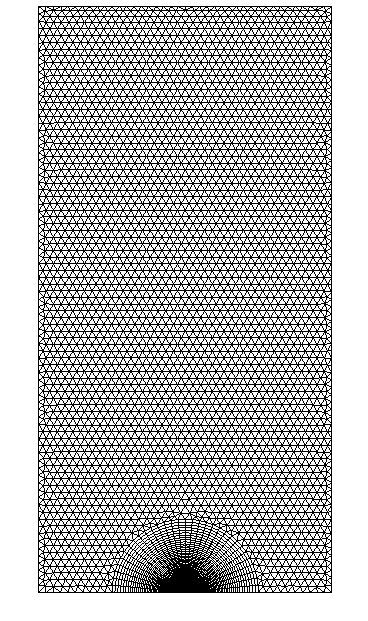3. Modeling A#
3.1. Characteristics of modeling#
It is a nonlinear elasticity calculation under the hypothesis of small displacements, in plane deformations. The crack is opened in pure I mode. Only half of the structure is represented by symmetry.
3.2. Characteristics of the mesh#
The mesh at the input of the test case into a linear mesh with the following characteristics:
-Number of knots: 8936
-Number of elements:
-Triangles: 6494
-quadrangles: 5408
The radius of the radiating domain at the bottom of the crack is \(25\mathit{mm}\). The size of the elements connected to the bottom of the crack is \({10}^{-3}\mathit{mm}\)
At the execution of the test case, a new quadratic mesh with elements of BARSOUM at the bottom of the crack is created by executing the commands CREA_MAILLAGE (keyword LINE_QUAD) then MODI_MAILLAGE (keyword MODI_MAILLE, option NOEUD_QUART).

3.3. Tested sizes and results#
The results obtained for three different integration rings are compared:
The reference values of G from method 3 POST_K1_K2_K3 selected as well as the associated details are provided in the table below.
Calculation instant |
Surface effort taxed (MPa) |
Reference: \(G(N/m)\) From POST_K1_K2_K3 (method 3) |
Tolerance (%) |
1 |
|
1.13702E+05 |
0.3 |
2 |
|
2.85869E+05 |
0.3 |
3 |
|
3.42359E+06 |
0.2 |